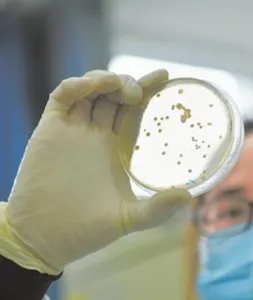


The conventional standard agar plate count methods such as those stated in BAM, AOAC, APHA, ISO, etc. used for monitoring microbial activities in foodstuffs involve the counting of the number of colony forming units (CFU’s) of a prepared sample homogenate in duplicate after cultivation of microorganisms over a stipulated incubation period with dilutions in a selective agar medium for enumeration.
It is nearly impossible to know the true amount of viable microorganisms in a sample, just like those chemical analytical methods do. Quantitative culture-based microbiological methods also have performance attributes and operational limits in standard method validation exercises. But, unlike chemical analytical methods, many of the performance attributes of culture methods are based upon particle distribution (i.e., distribution of the microorganisms) as defined by the Poisson distribution.
There is also a possible over-dispersion in a culture method due to clumping of microbes or insufficient dilution made at the sample preparation stage. Other technical factors such as physic-chemical properties and overall microbial composition of the sample, incubation stress leading to damaging organisms, detection media components and incubation conditions can also contribute to variability and uncertainty in measurements by these methods.
Uncertainty of measurement can also arise within and between experiments from many sources including inconsistencies in quality of reagents, pipette calibration, as well as dilution preparation and storage conditions of standards. However, in theory most, if not all, of them are controllable, such as checking of performance of culture media, incubators, weighing balance, pipettors and other instruments, and between-analyst repeatability within laboratory.
Hence, we may summarize the following uncertainty contributors to an aerobic count experiment, many of which are not easily quantifiable:
1. Sub-sampling uncertainty regarding its sample homogeneity and background micrflora and their concentration over the target organisms to be counted
2. The physical state of the sample matrix (liquid, powder, solid) affects the standard deviation of two sources of uncertainty, i.e. the one linked to the matrix (including sub-sampling of the test portion, and secondly the one linked to the preparation of the initial dilutions
3. Sample transportation conditions prior to arrival at laboratory (hygienic environment, holding time and temperature)
4. Laboratory storage conditions before analysis
5. State of culture media, reagents and water purity
6. How well is the sample homogenization or mixing, e.g. using Stomacher, blender or turbo mixer
7. Preparing and dispensing dilutions
8. Handling of inoculation technique (filtration, pour plate, spread plate, spiral plate methods)
9. Incubation temperature and conditions
10. Microbial growth concentration in each culture plate
11. Validity of equipment (incubators, pipettors, etc.) and analyst’s technical competence